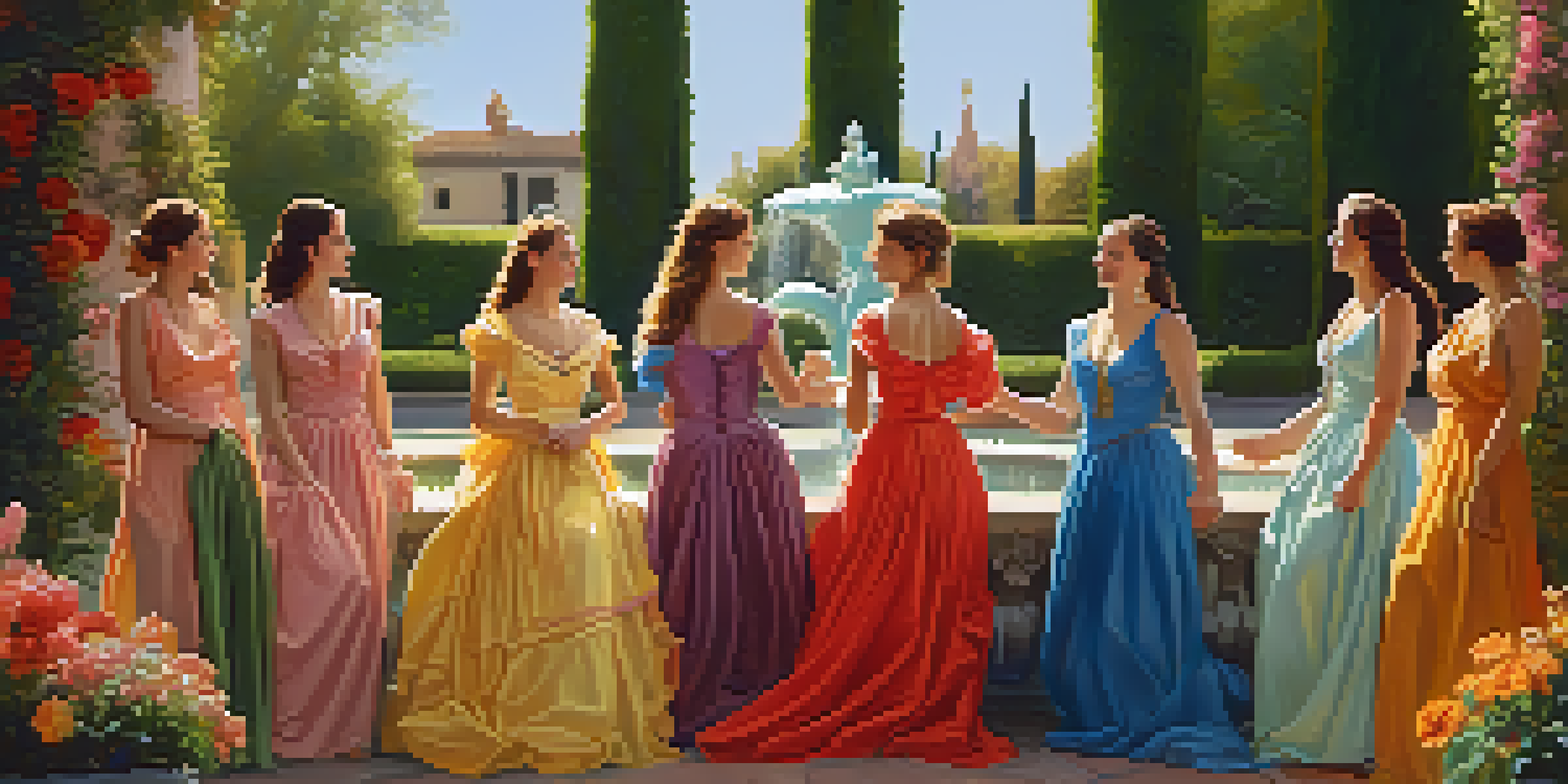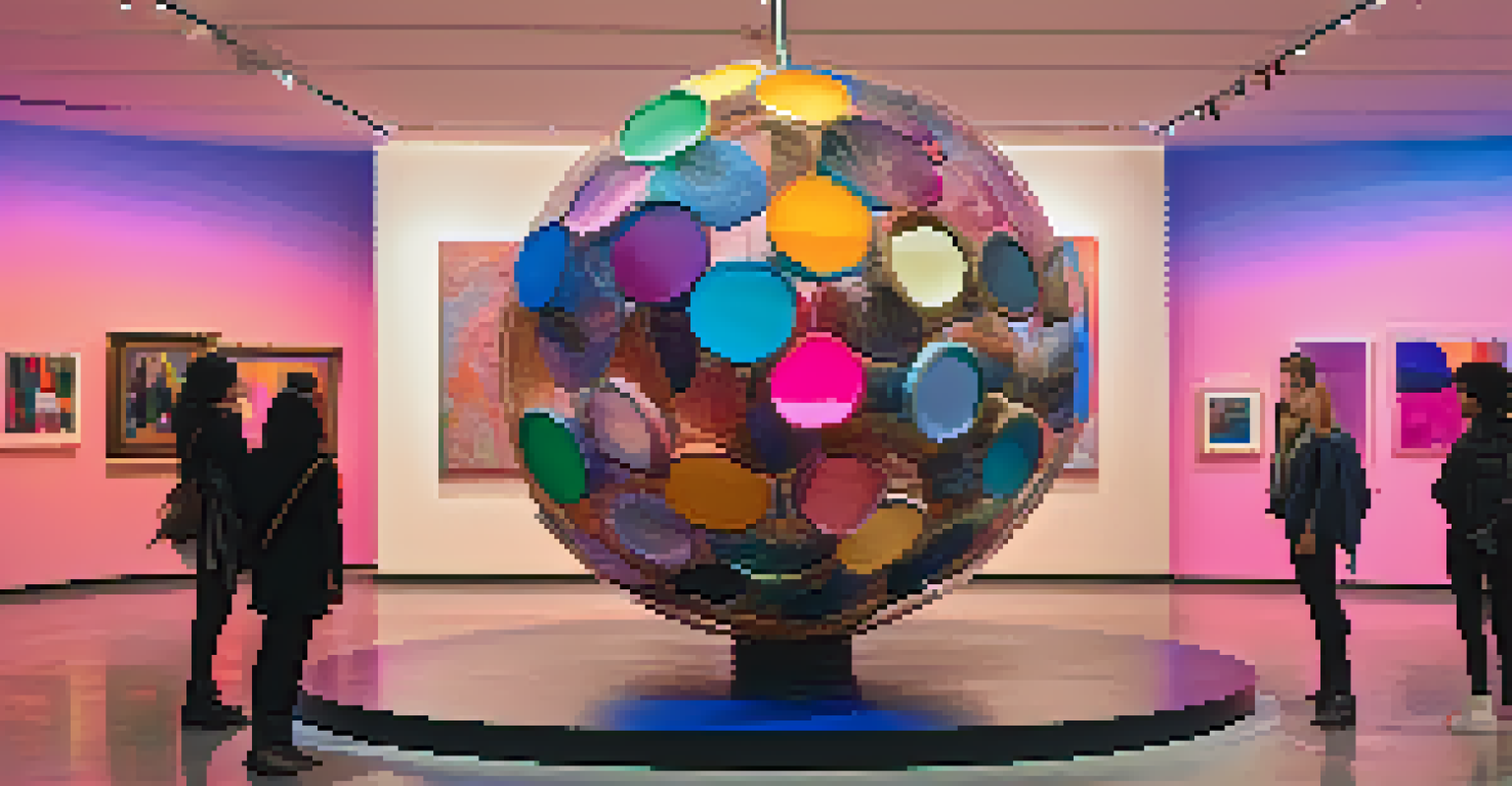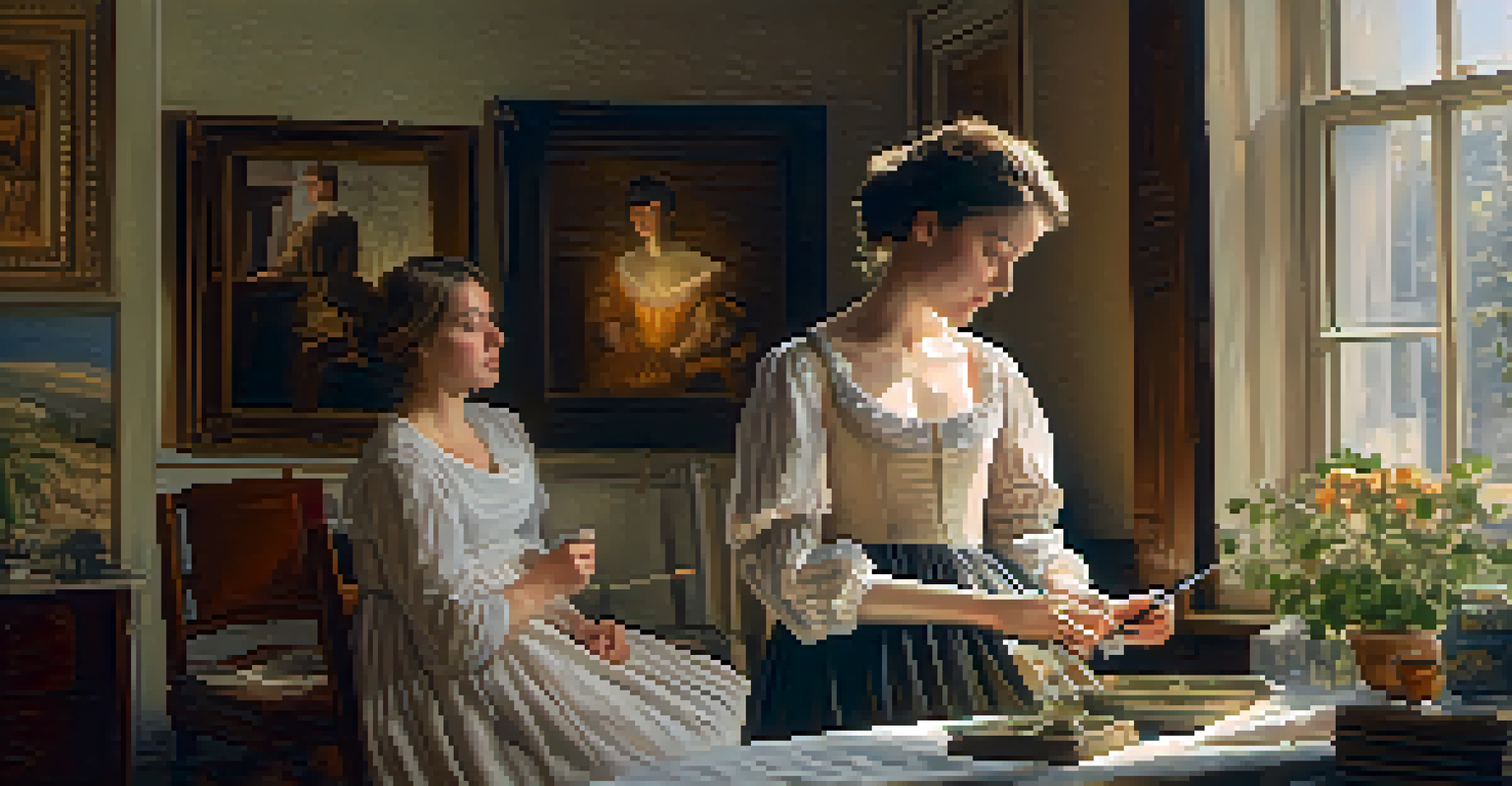The Evolution of Gender Roles in Artistic Representations

Ancient Art: Gender Roles in Early Civilizations
In ancient civilizations, artistic representations often reflected strict gender roles. Men were typically depicted as hunters, warriors, and leaders, while women were shown in nurturing roles, focused on family and home. This division was not just a reflection of societal norms but also a way to reinforce them through visual storytelling.
Art is the most beautiful of all lies.
For instance, in ancient Egyptian art, men were often portrayed larger and more prominently than women, indicative of their perceived superiority. Women, on the other hand, were often illustrated in domestic settings, emphasizing their roles as caretakers. Such depictions set the stage for centuries of artistic tradition that mirrored these gender expectations.
However, even within these constraints, some artworks began to challenge these norms, presenting women in more powerful or complex roles. This early tension in gender representation laid the groundwork for future artistic explorations of gender identity and roles.
The Renaissance: A Shift in Artistic Perspectives
The Renaissance marked a significant turning point in artistic representations of gender. Artists like Leonardo da Vinci and Michelangelo began to explore humanism, emphasizing individualism and the importance of personal experience, which allowed for more nuanced portrayals of both genders. Women were often portrayed as muses or goddesses, yet this still reinforced certain stereotypes.

Paintings such as Botticelli's 'The Birth of Venus' showcased women as idealized figures, embodying beauty and virtue, yet often devoid of agency. This duality of representation highlighted a growing fascination with the female form while simultaneously upholding gender hierarchies. This era began to question traditional roles, hinting at the complexities of gender identity.
Gender Roles Evolve in Art
Throughout history, artistic representations of gender have transformed from rigid stereotypes to more nuanced and empowered portrayals.
As the Renaissance progressed, some artists began to depict women in more active roles, participating in the narratives of their artworks. This shift signified the start of a gradual evolution in how gender roles were represented in art.
The Enlightenment: Challenging Traditional Norms
The Enlightenment era brought about a wave of philosophical thought that challenged established norms, including those surrounding gender. Artists began to draw inspiration from Enlightenment ideals, portraying women not just as passive subjects but as thinkers and leaders. This period saw the emergence of female artists who began to redefine their roles in the art world.
The artist is a creator of things, and only he can tell what he has made.
For example, artists like Élisabeth Louise Vigée Le Brun gained recognition for their work, which showcased women in empowered positions. Her portraits not only captured the likeness of her subjects but also conveyed their intellect and strength. This was a significant departure from earlier art that often limited women to decorative roles.
The Enlightenment's influence on art paved the way for a more critical examination of gender roles, setting the stage for future movements that would continue this exploration.
The 19th Century: Feminism and Artistic Representation
The 19th century experienced a surge in feminist movements, which greatly influenced artistic representations of gender. Female artists began to assert their presence in the art world, challenging the male-dominated narrative. This period saw the rise of movements like Impressionism, where women artists like Berthe Morisot and Mary Cassatt depicted the lives and experiences of women.
In contrast to their predecessors, 19th-century female artists often focused on intimate domestic scenes, highlighting the complexity of women's lives. This shift not only humanized women but also provided a platform for their voices in art. Their work began to reflect a growing awareness of women's rights and societal roles.
Feminism's Impact on Art
The rise of feminist movements in the 19th century significantly influenced female artists to challenge traditional narratives and highlight women's experiences.
As feminism gained traction, art became a medium for social commentary, with representations of women evolving to include themes of independence and empowerment. This artistic revolution was a pivotal moment in the ongoing evolution of gender roles in art.
The 20th Century: Breaking Boundaries
The 20th century ushered in a radical transformation in the way gender roles were portrayed in art. Movements such as Surrealism and Abstract Expressionism allowed artists to explore identity beyond traditional binaries. Artists like Frida Kahlo and Georgia O'Keeffe used their work to delve into personal and collective experiences of gender, creating powerful narratives that challenged societal norms.
Kahlo's self-portraits, for instance, explored themes of identity, pain, and femininity, while O'Keeffe's abstract forms celebrated the female experience in a bold new way. Both artists defied conventions, offering fresh perspectives on womanhood that resonated with audiences. Their contributions were crucial in expanding the discourse around gender in art.
This era also saw the emergence of feminist art movements that directly addressed issues of gender inequality, using art as a form of activism. The 20th century became a crucial period for redefining gender roles, as artists began to embrace and express the complexities of identity.
Contemporary Art: Fluidity and Diversity in Gender
In contemporary art, the representation of gender has become increasingly fluid and diverse, reflecting a broader understanding of identity. Artists are now challenging the binary notions of gender, exploring themes of gender fluidity, intersectionality, and representation. This shift has led to a richer tapestry of artistic expression that encompasses a wide range of experiences.
For example, artists like Zanele Muholi and Nick Cave utilize their platforms to address issues surrounding race and gender, creating work that is both personal and political. Their art not only represents diverse identities but also advocates for social change, breaking down barriers and fostering understanding.
Contemporary Art Embraces Diversity
Today's artists are breaking away from binary notions of gender, exploring fluidity and intersectionality to reflect a broader understanding of identity.
The contemporary art scene illustrates a significant departure from traditional representations, emphasizing that gender is not a fixed category but rather a spectrum of identities. This evolution reflects the ongoing dialogue around gender and continues to inspire new generations of artists.
The Future of Gender Representation in Art
As we look to the future, the evolution of gender roles in artistic representations shows no signs of slowing down. With the rise of digital art and social media, artists have new avenues to express their identities and challenge societal norms. This democratization of art allows for a wider array of voices to be heard, further enriching the conversation around gender.
Emerging artists are increasingly using technology to explore and express their gender identities in innovative ways, from interactive installations to virtual reality experiences. These new mediums not only enhance representation but also invite audiences to engage with gender in more immersive and meaningful ways.

The future of gender representation in art promises to be vibrant and dynamic, as artists continue to push boundaries and redefine what gender means in a contemporary context. As we witness this ongoing evolution, it becomes clear that art will play a crucial role in shaping our understanding of gender for years to come.